
Beauty vloggin’: The influence of beauty vloggers on "Gen Zers"
Thanks to the increase of the Beauty Vloggin phenomenon, YouTube is currently shaping the purchasing patterns of this new generation at a global level: Gen Zers have become highly influenced by what beauty vloggers do, show and review in front of the camera.
Nowadays our lives and our actions are greatly influenced by social media platforms. Social media such as YouTube, Facebook, Instagram, Twitter and many others have become essential features of our everyday life. These platforms enable people to interact with each other at a global level, to communicate and share information, thoughts, and ideas in such a way that we can identify ourselves as members of a global community. Among these web-based communication tools, YouTube is becoming the favourite platform of young people between 13 and 17, also known as "Gen Zers".
YouTube: the origin of beauty vloggin
We live in a world in which web-based communication tools have become an essential aspect of our everyday life. Social networking platforms allow people to connect easily with others and to create online communities that are not anymore bounded but instead can be defined as global. Although people have always been organized in networks, the Information Age has allowed the expansion and reconfiguration of networks which now can be defined as digital. All this has been possible thanks to the advent of the Internet, which increased the level of interconnectedness and mobility not only of people but also of knowledge, communication and information.
Deployed for the first time in 1969, the Internet became popular just two decades later thanks to the diffusion of the personal computer (PC), the creation of the server World Wide Web in 1990 and the great social demand of communication networks. In addition to this, the diffusion of wireless communication increased the connectivity of people especially through the use of mobile phones. The Internet, the World Wide Web and wireless communication can thus be defined as the fundamental means of the interactive communication we are experiencing these days.
Among the billions of videos uploaded on YouTube, vlogs can be regarded as the most influential ones at the moment.
Moreover mass communication through traditional media, such as television, radio or newspapers, is becoming increasingly Internet-based. This change led to the creation of new forms of communication that can be defined as mass self-communication. The perfect example of mass self-communication is YouTube. Founded over ten years ago, on February 14, 2005, YouTube has become the most famous video-sharing website and a main influence in our lives. The platform is currently accessible in 88 countries and in 76 different languages and its users, accounting for over one billion, can search, create, curate, watch and share video content instantly and endlessly. Thanks to the possibility of choosing what to watch based on individual interest, YouTube has been transformed from a simple video sharing platform into a sort of “new generation television”. Entertainment, politics, music, video games and beauty are just a few of the video categories that can be found on this platform and even though not all videos have been created to persuade and influence people, it seems that the majority of them have been created for a purpose. YouTube has therefore become a powerful platform able to connect and influence people in an unprecedented way. Among the billions of videos uploaded on YouTube, vlogs can be regarded as some of the currently most influential ones.
What are vlogs? And why are vloggers so influential?
The word “vlog”, from which the verb “vlogging” derives, stands literally for “video blogs” and can be explained as the practice of filming and sharing videos on social media platforms like YouTube, that capture moments of your personal life. All those individuals that film themselves daily at arm's length throughout their everyday activities are therefore called vloggers. This phenomena, initially sporadic and incorporated in individual sites, started to gain popularity with the advent of YouTube which became, and still is, the perfect platform for sharing such videos.
A video can be defined as a vlog if it entails one host filming moments or events of his or her personal life, speaking directly to the camera and usually leaning in as if speaking across the table to a friend. Basically anyone can become a vlogger these days and guidelines can be easily found online where, by simply searching for “vlogging”, plenty of material is provided for someone wishing to “become a vlogger”. Vlogs vary in relation to the topic and the targeted audience. The most popular topics are the following: review and unboxing products, pranks and comedy, beauty/fashion/fitness, “how to” and education, life style, virtual games, movies/TV/books reviews, travel and pop culture.
With millions of subscribers and followers, vloggers are becoming more influential than traditional celebrities.
Vlogging has become a huge worldwide phenomena. With millions of subscribers and followers, vloggers are becoming more influential than traditional celebrities: they look and live like most of their followers and this makes them more relatable and approachable than Hollywood celebrities. In addition to this, the shift from a one way means of communication, the TV, to one that instead “talks back”, as on YouTube, has made the relationship between YouTubers and their followers even more powerful and useful. The fame of these “new celebrities” is related to various features.
First of all, YouTube stars are better at developing relationships with their followers than traditional celebrities. They are more approachable and are able to build authentic and intimate relationships with their viewers. Second of all, YouTube celebrities drive more engagement because they personally interact with their viewers, are more accessible on social media, and keep their community updated through frequent Q&As. Third, YouTube stars are able to set trends and shape pop culture: their own opinions, thoughts and in general what they talk about in their videos are fundamental factors for shaping the opinions and worldview of their followers.
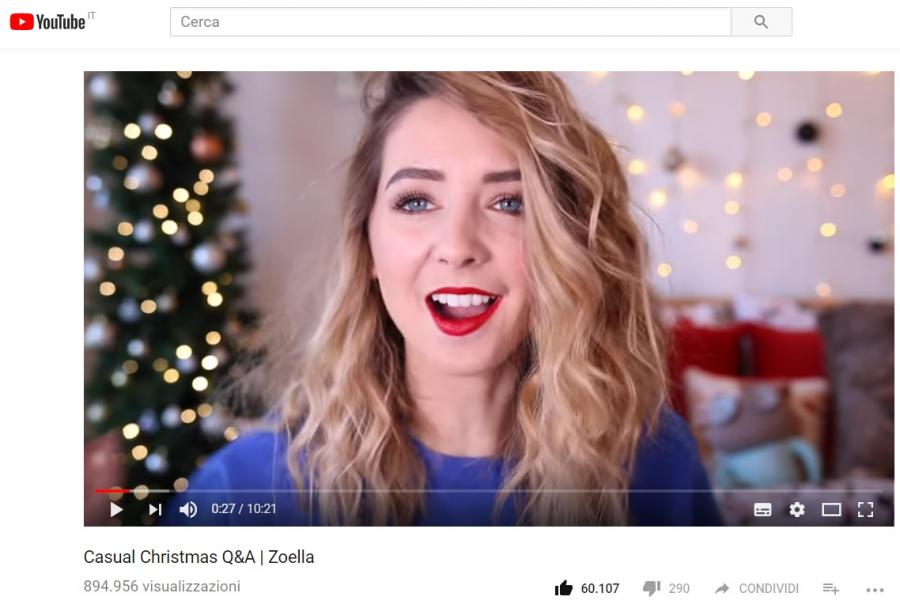
Figure 1. Casual Christmas Q&A of Zoella.
Being a vlogger is therefore regarded a real job nowadays: with more than 10,000 videos created, more than one billion views and more than 70,000 hours of “watchtime” generated, YouTube content creators, and vloggers in particular, are capturing the attention of marketers and brands who have realized the huge potential of these influencers for publicizing their products or services. As soon as companies and brands recognized the power of this new tool and, they started making use of vloggers and their large exposure to millions of subscribers for marketing purposes. Even though Millennials have been the preferred target generation for marketers, nowadays the focus has shifted towards Generation Z who at the moment represent the largest group of vlog-viewers and the largest consumer-spending generation.
The label "Z" given to this generation derives from the book "Generation X: Tales for an accelerated culture" published in 1991 by Douglas Coupland. In his book, Coupland writes about his generation, all those people born between 1965 and 1980, which he defines as Generation X. From that moment on the label has stuck, and similar labels were created for the following generations such as Generation Y, better known as Millennials, and Generation Z, also defined as "Gen Zers", "iGen" or "The New Millennials" .
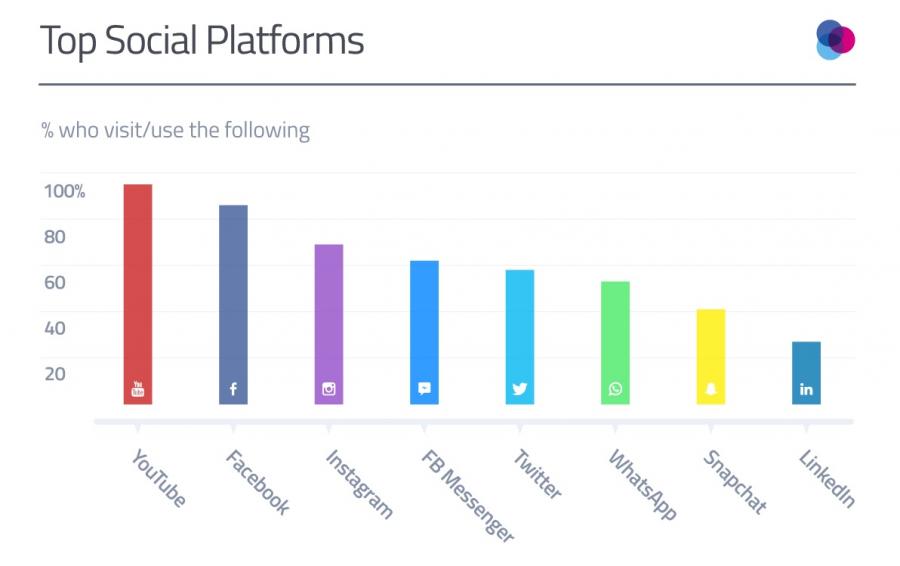
Figure 2. Top Social Platforms. % of “Gen Zers” who visit or use social media
Compared to other social media (Fig. 2), globally the 95% of “Gen Zers” cannot live without YouTube: this platform has become an essential part of their “media diet”. Whereas Millennials, people between 18 and 34 years old, witnessed the arrival of Facebook and the shift from traditional mobile phones to smartphones, Generation Z was born into an already high-tech and highly interconnected world. The members of this generation, young people between 13 and 17, can therefore be said to be digital natives, whose interest is shifting away from text-based online content to video content. 57% of the “Gen Zers” watched at least one vlog in the last month, showing that vlogging has become an important part of their lives.
Thanks to the ability of vloggers to reach a large audience and to provide product information and reviews in a creative way to followers whose trust they have gained, advertising partnerships with popular vloggers is an attractive option for companies that want to increase their profit. Reaching a young, affluent and digitally savvy audience is their main objective and vloggers represent the perfect way to achieve it. As a consequence, vloggers are starting to play a significant role in defining what youth audiences like, view and buy.
A case in point: Beauty vloggers
Beauty vloggers represent the most significant example of this phenomenon as they are leading their audience's engagement with and awareness of beauty brands. Vloggers in this domain are mainly young women who film videos about their daily beauty routine or tutorials on how to recreate a certain kind of look. While filming these videos they give make-up tips and review the beauty products they use with the purpose to share their knowledge with other people, by posting the video on YouTube. The videos are usually really personable, intimate and relaxed, thanks to the performance of the vloggers themselves but also from the setting of the videos. The recurrent setting is the bedroom, a space that is regarded as fundamental for the identity formation of teenagers, especially of female teenagers.
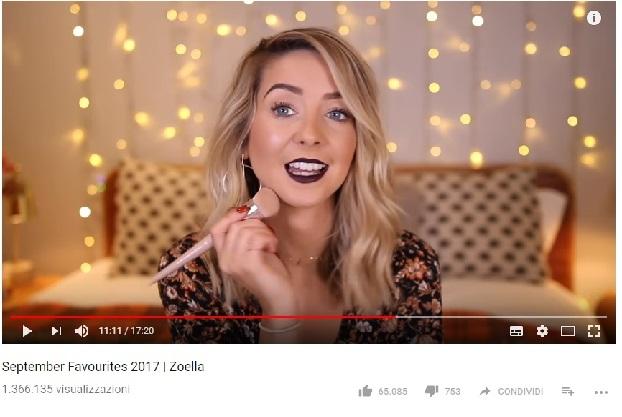
Figure 3. Zoella September Favourites 2017.
In these videos, vloggers do not just present and review beauty products: they also talk about the things teenagers usually talk about, strengthening the bond between them and their audience. These are the key features that have made this kind of video content very successful. On YouTube beauty views reached a total of 125 billion of views in 2016 (Fig. 4) and the number of beauty videos grew by 200% in just 16 months (Fig. 5).
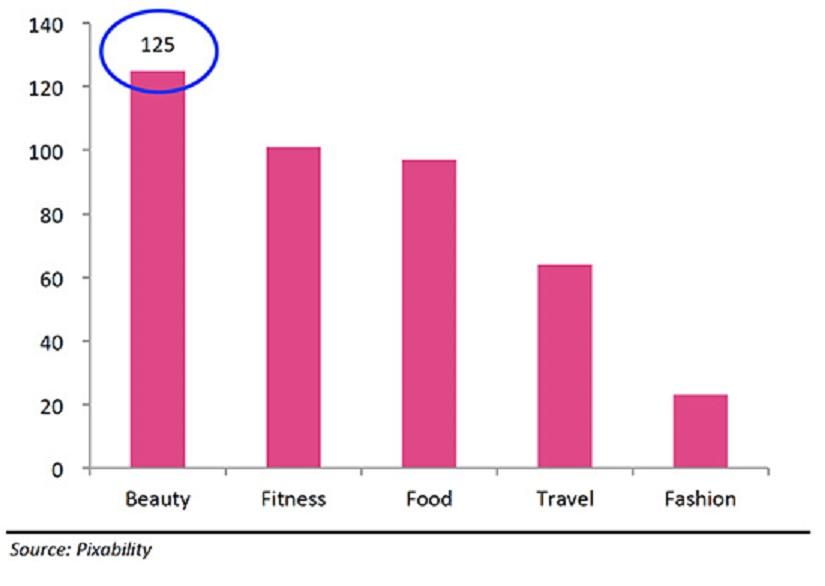
Figure 4. Total views of Lifestyle Category Videos on YouTube as of June 2016 (Bil.)
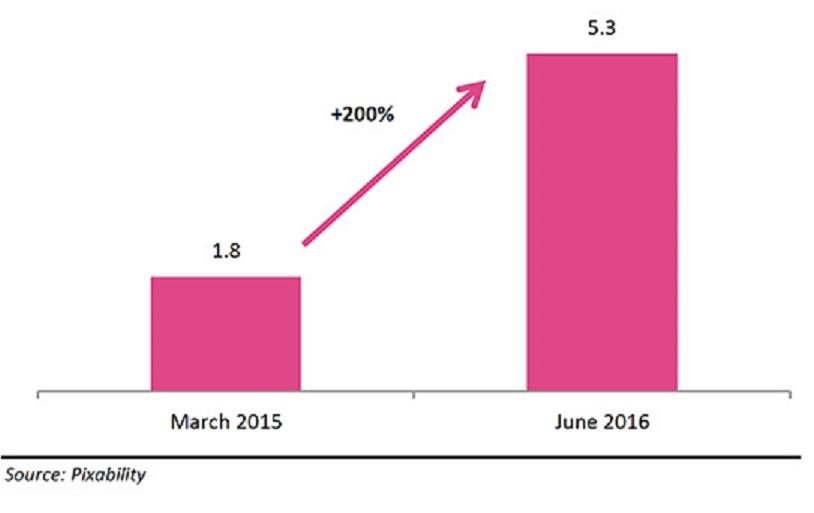
Figure 5. Number of Beauty-Related videos on YouTube (Mil.)
The importance of beauty vlogs and the increase of views in recent years are related to different factors: not only do “Gen Zers” turn to the approachable YouTube stars when it comes to reviews of cosmetics, they also turn to them to overcome the pressure that social media put them under in terms of appearances. Born in an era characterized by social media, this generation feels pressured to always look good, and beauty vloggers have become the people that can help them overcome their insecurities.
On YouTube beauty views reached a total of 125 billion in 2016 and the number of beauty videos grew of the 200% in just 16 months.
The figures related to the phenomenon of beauty vlogs are astonishing and thus it is logical that marketers are turning to this social platform to advertise their beauty products. Many companies and brands are taking the phenomenon of beauty vlogs very seriously and have started to collaborate with vloggers for the promotion of their products. Missy Lynn, an American YouTuber, explained this very clearly:
“We have the beauty consumers’ attention, and that’s something commercials and ads don’t have… Brands can spend $20,000 on a billboard, and that can’t even guarantee them sales, but when you have a real person telling you the pros and cons of products, and actually showing you how to use them, you can see the impact.”
Moreover, the possibility of establishing long-term relationships with their customers and of selecting the desired target segments, have further increased the interest of companies in this new way of advertising. Different kinds of collaboration with vloggers have been established. direct sponsorship, affiliated links and free product sampling being the most common. "Gen Zers” in particular are the targeted customers: video and social platforms are preferred (82%) by “Gen Zers” over TV and blogs when beauty tips and advice are needed (Fig. 6).
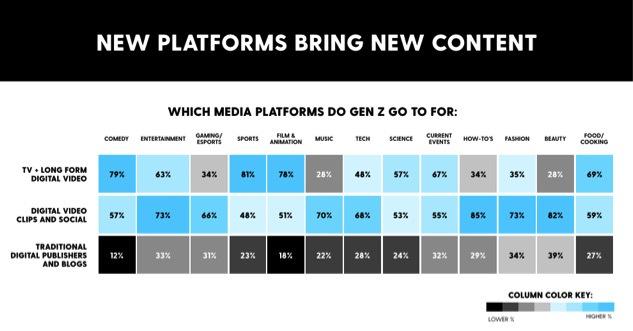
Figure 6. Media platforms where “Gen Zers” go for Beauty advices
An example of the reach of this phenomenon comes from research in the US. Here, as in many other countries, 65% of “Gen Zers”, females in particular, turn to YouTube for information and expertise about beauty products. In 2016, this generation spent $2.3 billion in total on beauty products divided in three main categories: skincare, cosmetics and fragrances.The beauty industry is undergoing a radical change thanks to vloggers, as an insider of Style Haul, a company that monetises a beauty channel, explained:
“But beauty is a really attractive industry online, because it’s a purchase that’s easy to make. A video of a girl applying eyeliner in her room directly translates into sales for a brand like Topshop.”

Figure 7. US: Estimated spending on core Beauty categories by female consumers ages 12-17, 2016 (USD Bil.)
The top influencer
Among those currently shaping the purchasing patterns of “Gen Zers”, the British vlogger Zoe Sugg, better known as Zoella, stands out. Like many other vloggers she started her career filming videos in her bedroom at the age of 19. However, her ability to evoke a feeling of intimacy and closeness with her viewers, enabled her to soon became a real YouTube celebrity. Zoella has currently reached a total of 12 million subscribers (Fig. 8) on her channel and many are the articles that rank her as the top beauty influencer of YouTube.
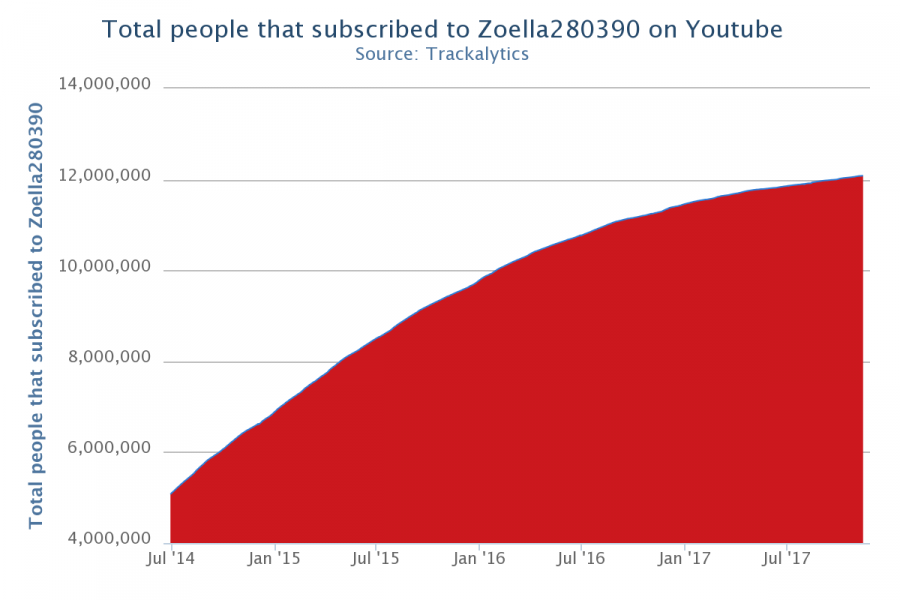
Figure 8. Total people that subscribed to Zoella280390 on YouTube
The majority of the videos on her channel are on beauty-related topics, covering a number of different categories: haul, first impression, monthly favourites and tutorials. In these videos, rich in content, Zoella usually shows how to use the cosmetics she bought or that she got from brands and she gives her reviews and opinions.
The commercialized nature of these videos can be noticed not only by the recommendations that she gives but also by the text written in the subscription box under the videos, where it is possible to find all the items that she used with the corresponding URL hyperlinks, useful if you want to buy the products she showed with just a click of the mouse. By adopting a “big sister” persona, Zoella has been able to build a virtual and extended sisterhood with her subscribers reinforcing in this way the authority and trustworthiness of her advice and her knowledge of beauty products. By mentioning certain products in her videos, Zoella is able to boost the page traffic of those brands by about 40%. However despite her ability to increase the expenditure of her followers, Zoella puts her relationship with her fans first:
“I do sponsorships with brands, but I would say I probably turn down ninety percent, because I’ve built up this audience of people that trust my opinion. Y’know, ‘Is that mascara really good, or have you been paid to say that?’ And I will only want to talk about something I, one hundred percent, genuinely, would actually talk about.”
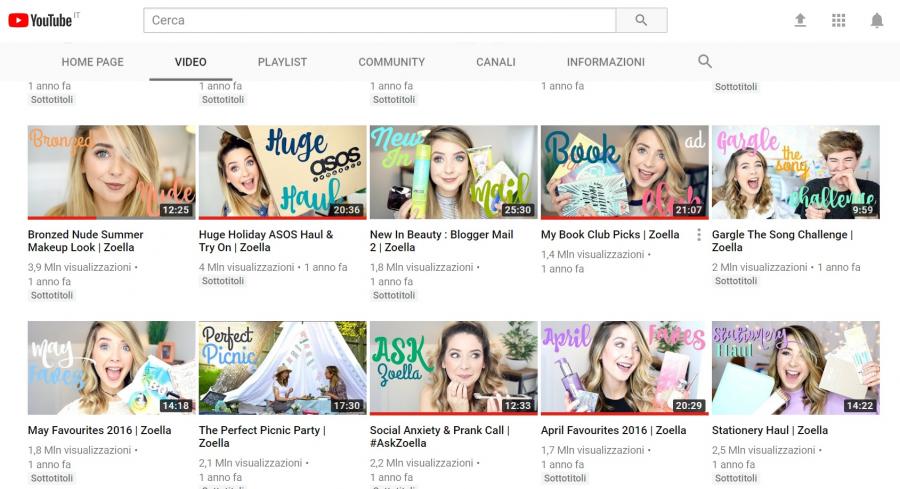
Figure 9. Zoella's videos on her YouTube Channel
Nowadays, these vloggers are building empires, producing beauty video after beauty video, and they have become real entrepreneurs. Indeed, in addition to her collaborations with beauty brands, Zoella has launched her own line of beauty products, first in the UK but now expanded to various other countries such as Germany, Canada, Australia, and the United States. At a global level, followers are encouraged to strengthen and materialize their bond with the vlogger by buying and consuming the products created by her. Zoella is therefore a good example of how beauty vloggers are able not only to build large followings by creating affective bonds with their followers, but also to shape their purchases and their lives in general.
Beauty Vlogging: a Global Phenomenon
Globalization has really changed our lives. Even though this phenomenon has always been part of our society, the increased interconnectivity and mobility that characterize the current stage of globalization has reached levels never seen before. Thanks to the advent of the Internet, many parts of the world are now connected with each other, allowing the creation of a global community. In this digital network society, the spread of social media allows people to share information and communicate with others in real time. Among these, YouTube constitutes a clear example of this phenomenon. This platform is self-generated in content, self-directed in emission, and self-selected in reception. Thus YouTube has become an influential means of mass self-communication and can be defined as such because of its reach: through Internet connection it is able to reach a potentially global audience.
The vlogging phenomenon on YouTube has increased the formation of global communities, thanks to the sense of credibility and integrity that vloggers are able to transmit through their vlogs. Beauty vloggers in particular exercise great influence over their “Gen Zers” followers. From the data presented, it is clear that beauty vloggers have a huge impact on the purchasing trends of this young generation, at a global level. They are paving the way for a whole new experience regarding the use of products and the way they are advertised. Beauty celebrities on YouTube promote not only beauty products as commodities but also their “persona”, an action that allows them to present themselves to their audience as authentic and true individuals. As a consequence, this true and authentic affective bond between beauty vloggers and “Gen Zers” translates in the trust of the latter in their favourite vloggers as influencers and advertisers. YouTube thus becomes a trustworthy source for customers belonging to this young generation because of its authentic interactivity, a feature that television will never be able to replicate.
References
Arnold, A. (2017, June 20). Why Influencer Marketing Works for Generation Z. Forbes.
Berryman, R. & Kavka, M. (2017, April 10) ‘I Guess A Lot of People See Me as a Big Sister or a Friend’: The role of intimacy in the celebrification of beauty vloggers, Journal of Gender Studies, 26:3, pp. 307-320
Beyond Traditional Media: Reaching Millennial Consumers Through YouTube Content Creators. (2014, august 13). [Blog post]
Castells, M. (2010). The Rise of the Network Society. Preface to the 2010 Edition of The Rise of the Network Society. pp. XVII-XLIV. Malden: Wiley Blackwell.
Cheung, J. (2014, December 11). The rise of the influential vloggers. [Blog post]
Deep Dive: Gen Z and Beauty—the Social Media Symbiosis. (2017, February 27). [Report]
Fortson, K. (2015, Novemebr 16). Youtube’s impact on our society. The Mycenaean.
Grimani, I. (2016, September 20). Vloggers on the Rise: Your Brand's Powerful Online Tool. [Blog post]
Hendrixen, M. (2015, June 23). How vloggers and young influentials have an Impact on Marketing and PR. [Linkedin post]
Jarboe, G. (2017, June 2). No Matter How You Define It, Generation Z Can’t Live Without YouTube.
McCrindle Research. (n.d.) How were they named?. [Blog post]
Mediakix Team. (2016, December 1). What Is Vlogging? Definition, History, & More. [Blog post]
Pemberton, B. (2017, July 18). WAY TO ZO : Zoella has launched an incredible Jelly & Gelato bath and body range with all items under £6 and fans are losing their mind. The Sun.
Sam (2017, June 29). 10 different popular types of vlogs. [Blog post]
Thompson, H. (2015, October 1). 3 Lessons to be learnt from retailers who boosted their sales with social media star-generated content. [Blog post]
Wang, X., Spotti, M., Juffermans, K., Cornips, L., Kroon, S. & Blommaert, J. (2013, September). Globalization in the margins. Tilburg Papers in Culture Studies 73.
Wiseman, E. (2014, July 20). Lights, camera, lipstick: beauty vloggers are changing the face of the make-up industry. The Guardian.
Wu, K. (2016). YouTube Marketing: Legality of Sponsorship and Endorsements in Advertising, Journal of Law, Business & Ethics, 22, pp. 59-92
Young, K. (2017, May 10). Why Influencer Marketing Works for Generation Z. [Blog post]